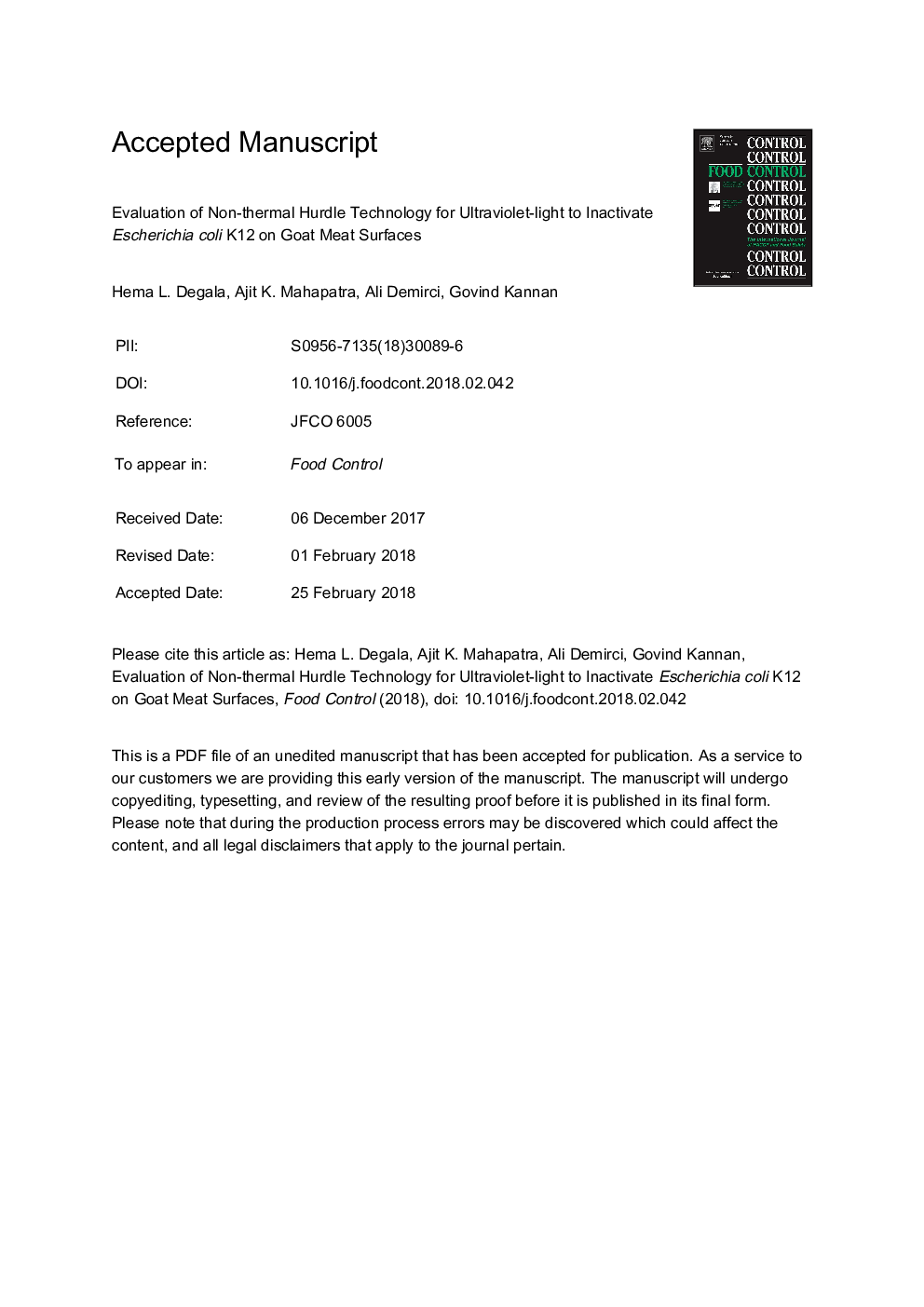| Article ID | Journal | Published Year | Pages | File Type |
|---|---|---|---|---|
| 8887941 | Food Control | 2018 | 33 Pages |
Abstract
Non-thermal processes are in demand in the meat industry due to their ability to inactivate foodborne pathogens, such as Escherichia coli O157:H7, at room temperatures. Although ultraviolet-light (UV-C) is a potential process for eliminating pathogens while preserving the quality of foods, its inefficiency in penetrating solid foods might result in a lower log reduction of pathogens in meat. Thus, it is necessary to look at hurdle technologies. Lemongrass oil (LG), with its antimicrobial, antifungal and antioxidant properties, can be an ideal alternative. Therefore, the objective of this study was to evaluate the efficacy of UV-C, LG, and their combination on E. coli K12 inoculated goat meat. Lemongrass oil at 0.25%, 0.5%, and 1% concentrations (w/v) with intensities of 100 and 200â¯Î¼Wâ¯cmâ2, which provided an energy dose of 0.2-2.4â¯mJâ¯cmâ2 of UV-C, was used to treat goat meat for 2, 4, 6, 8, 10, and 12 min. The top surfaces of LG treated goat meat samples were treated with UV-C by these combinations of treatments. The combination of 1% LG + UV-C with 200 μW cmâ2 treatment for 2â¯min resulted in a synergistic microbial reduction of 6.66 log10â¯CFUâ¯mLâ1 (below detection levels) of E. coli K12 compared to the control, the level of which was significantly higher than individual and other hurdle treatments (P â¤Â 0.05). No significant effect on the texture, whereas, changes in color and oxidative stability of goat meat was observed with LG + UV-C treatments. Although this combination seems to be a better option, treatment conditions need to be optimized and further studies are required to validate hurdle mechanisms for commercial applications.
Related Topics
Life Sciences
Agricultural and Biological Sciences
Food Science
Authors
Hema L. Degala, Ajit K. Mahapatra, Ali Demirci, Govind Kannan,
